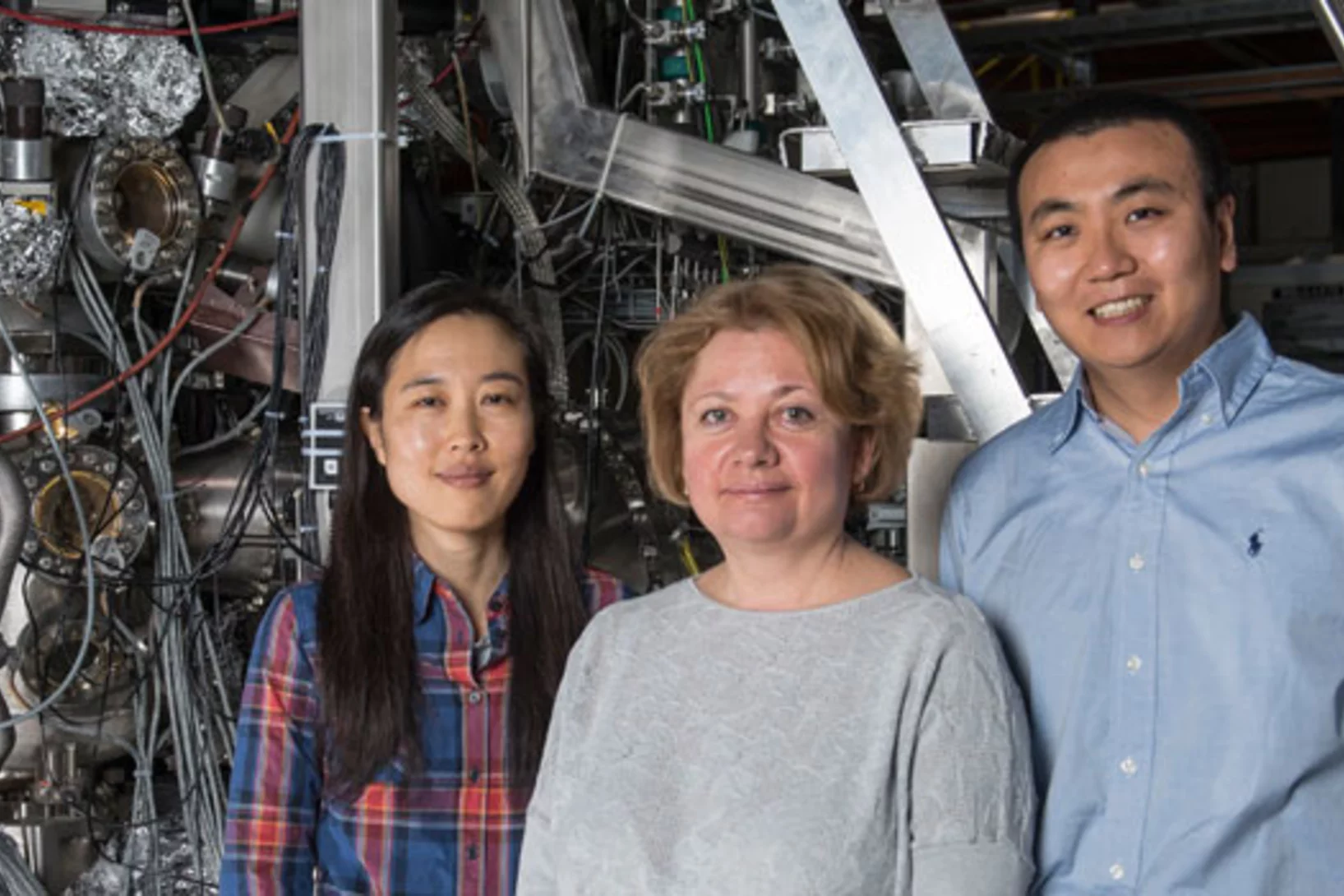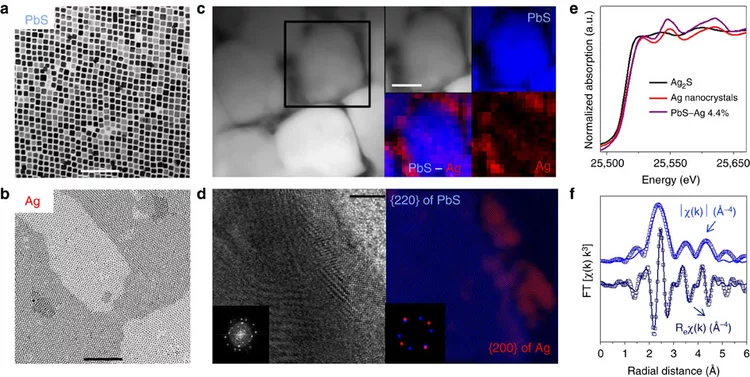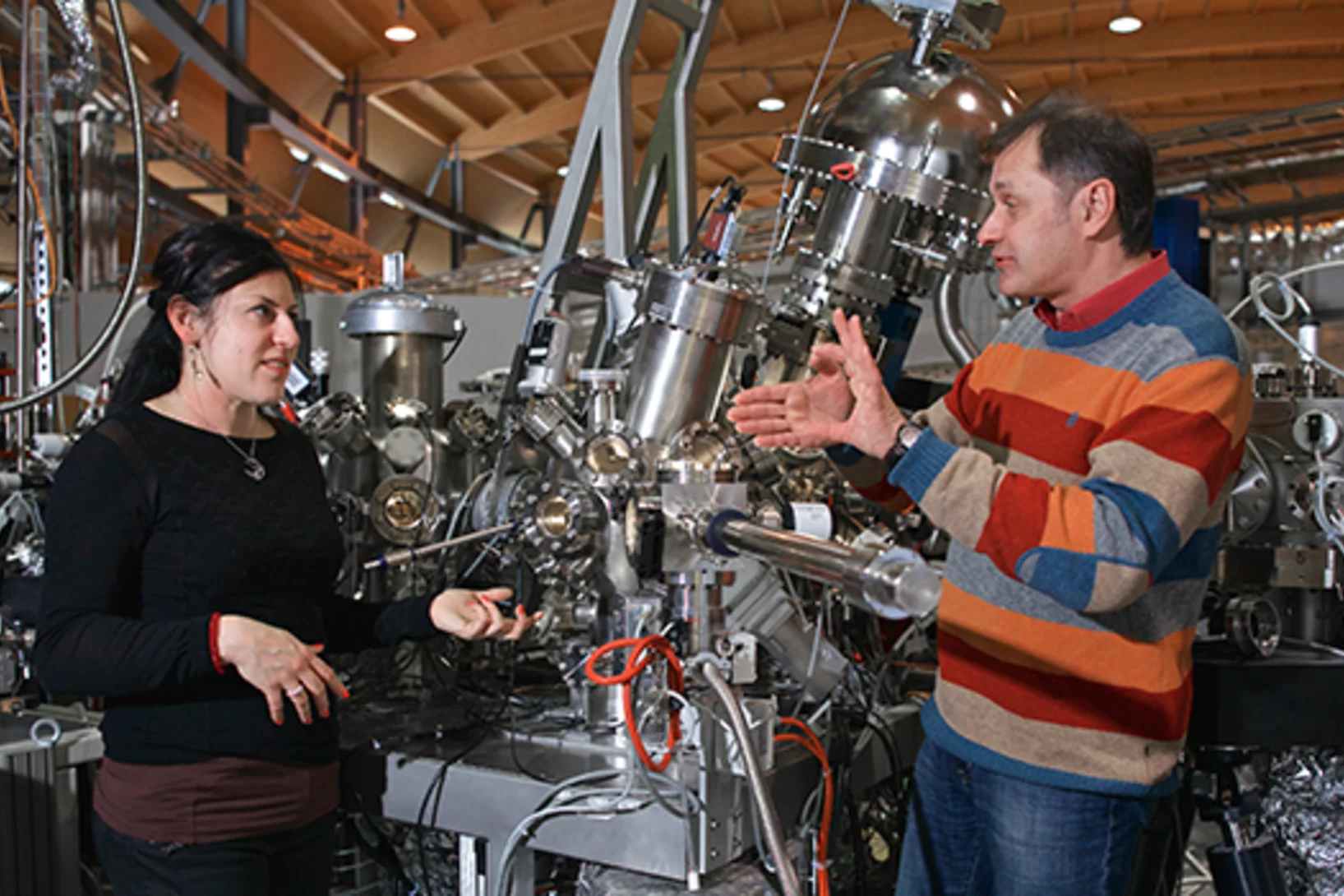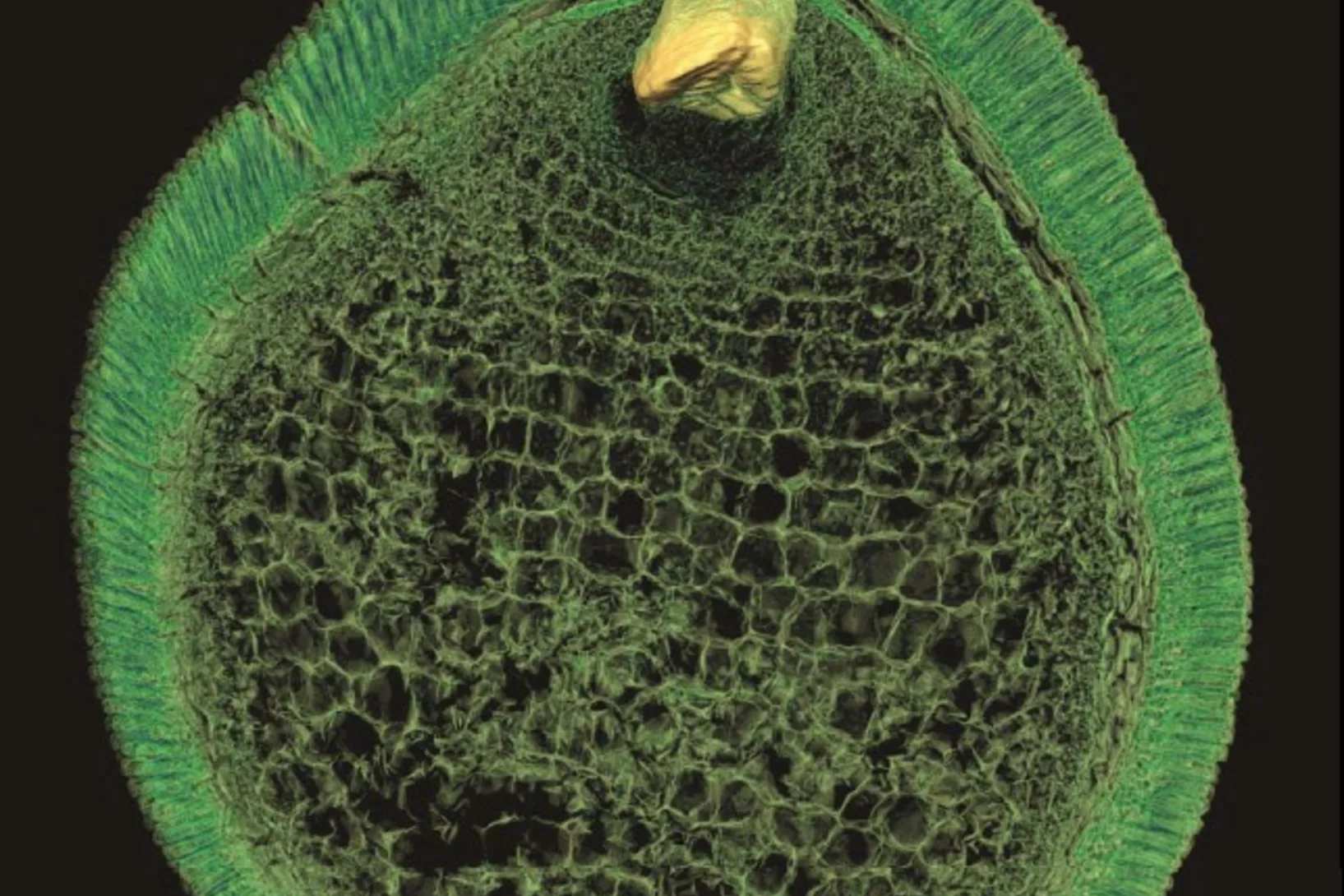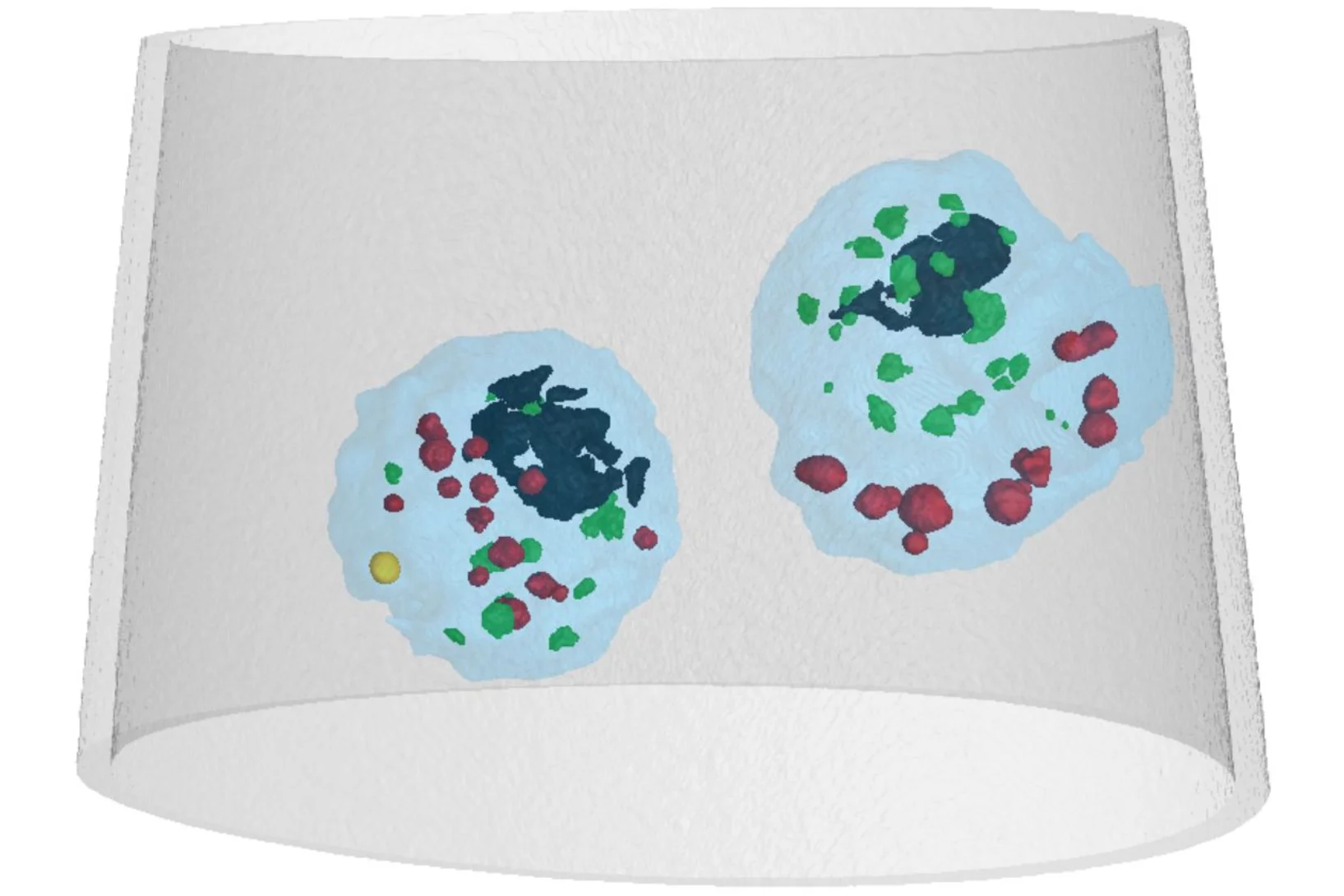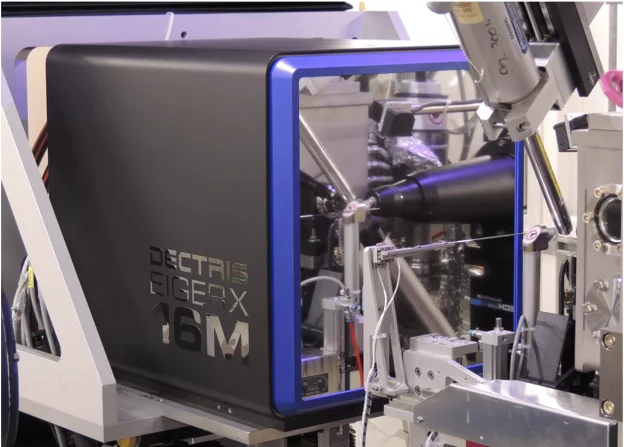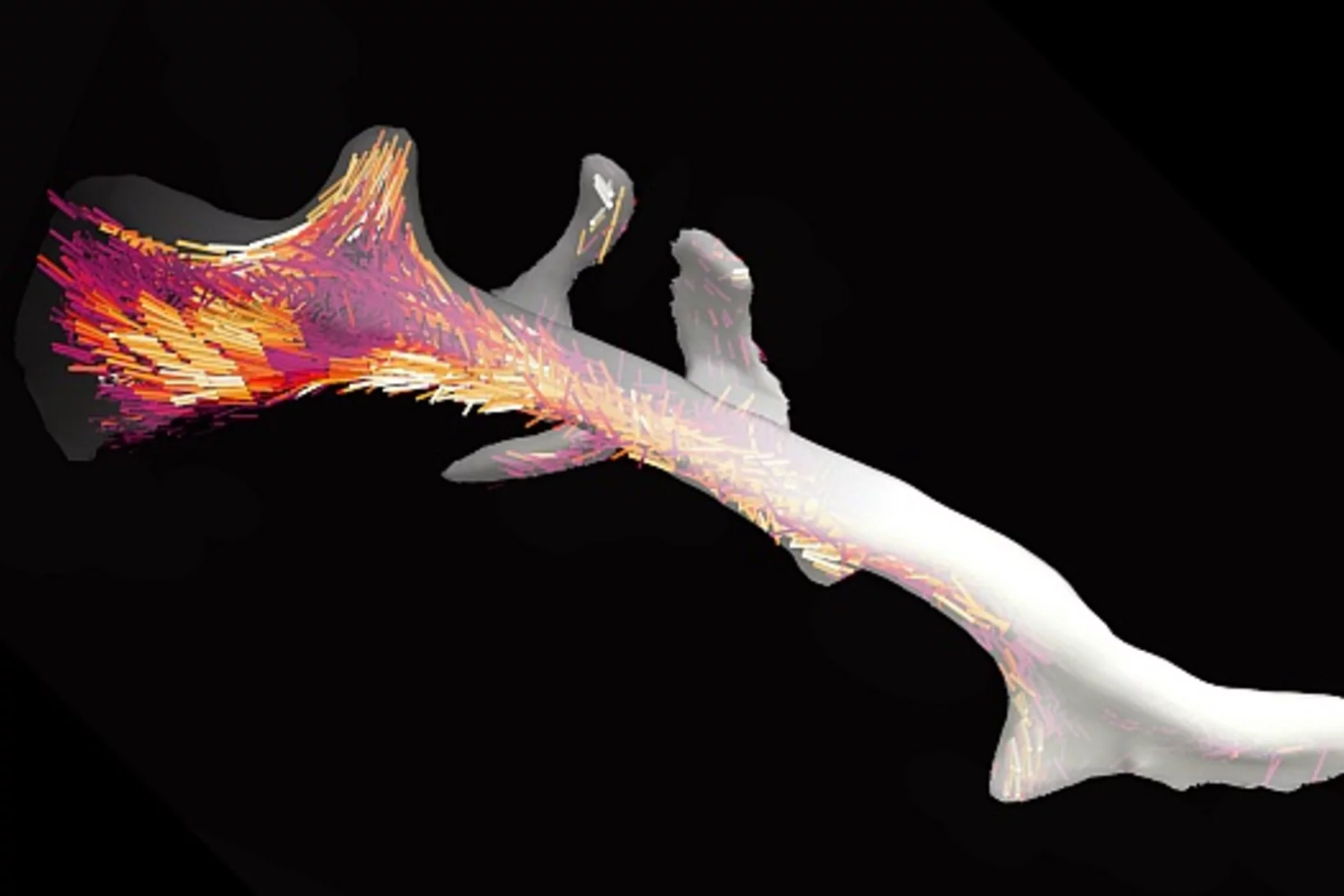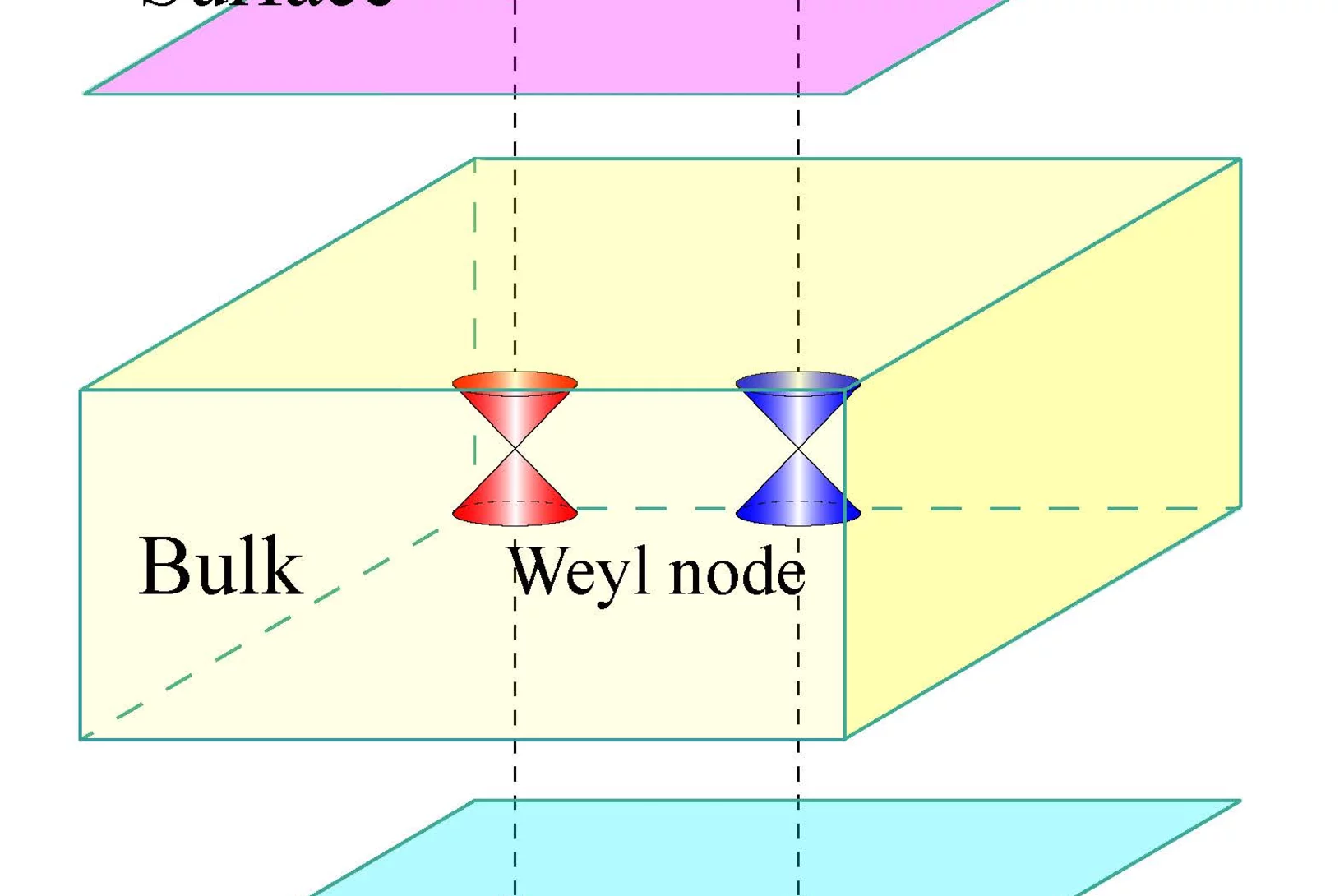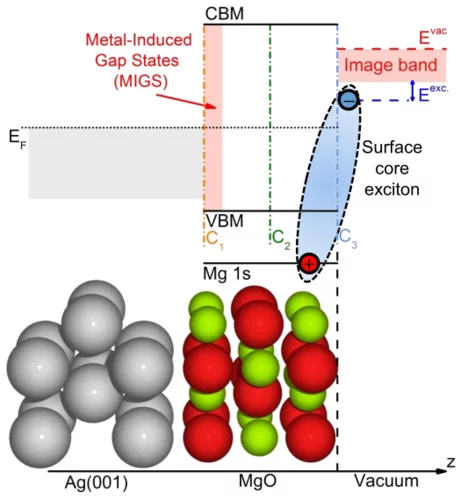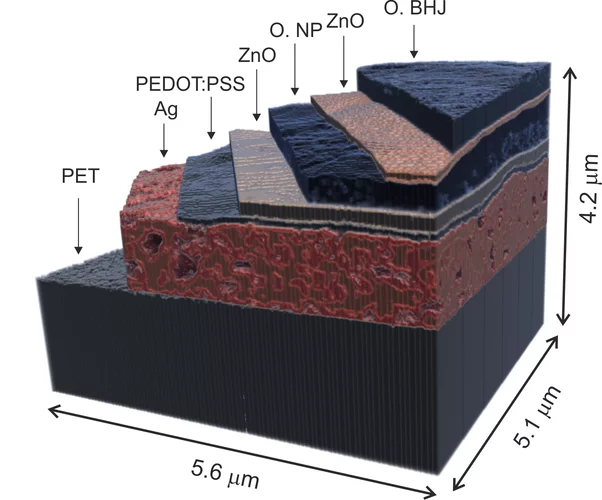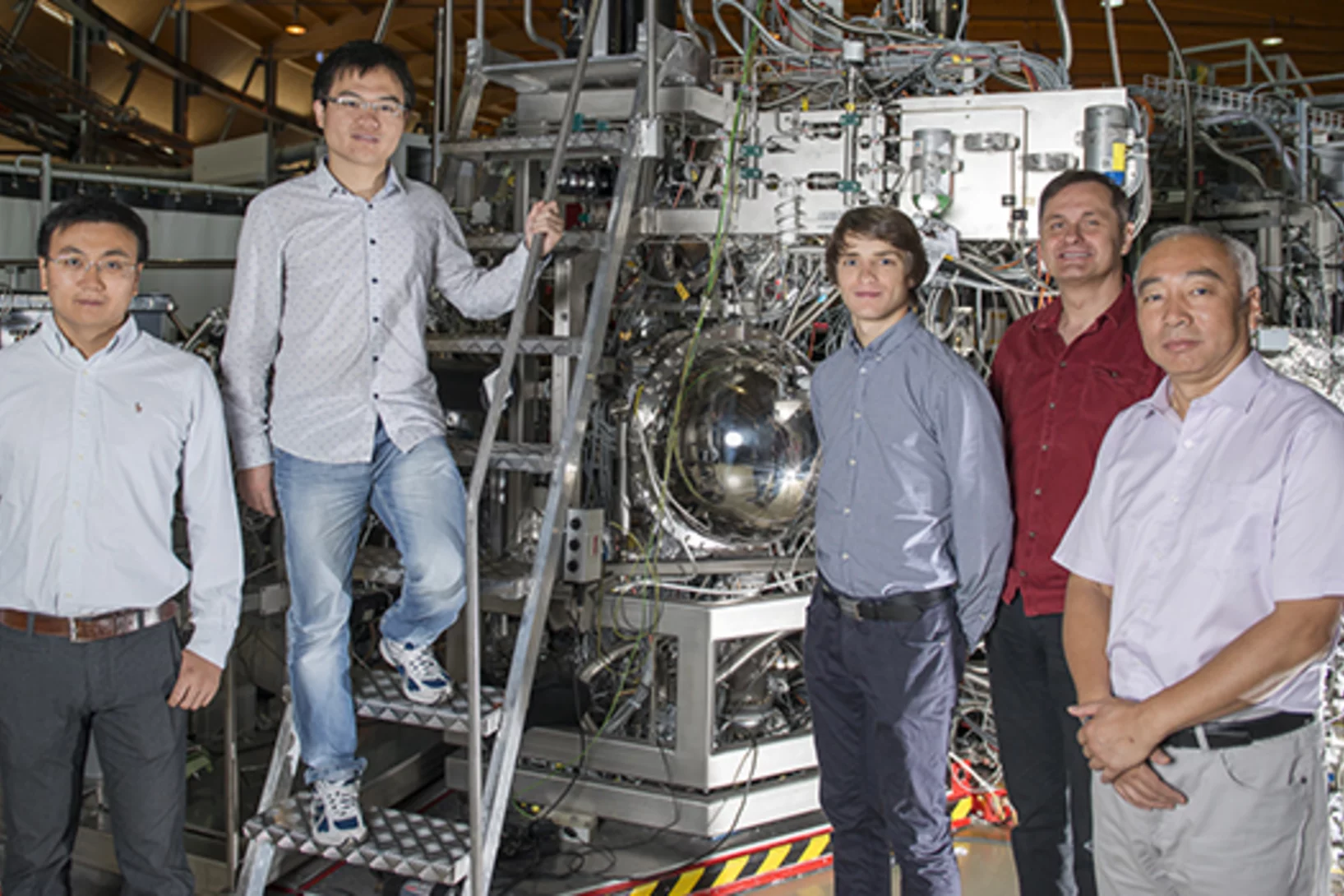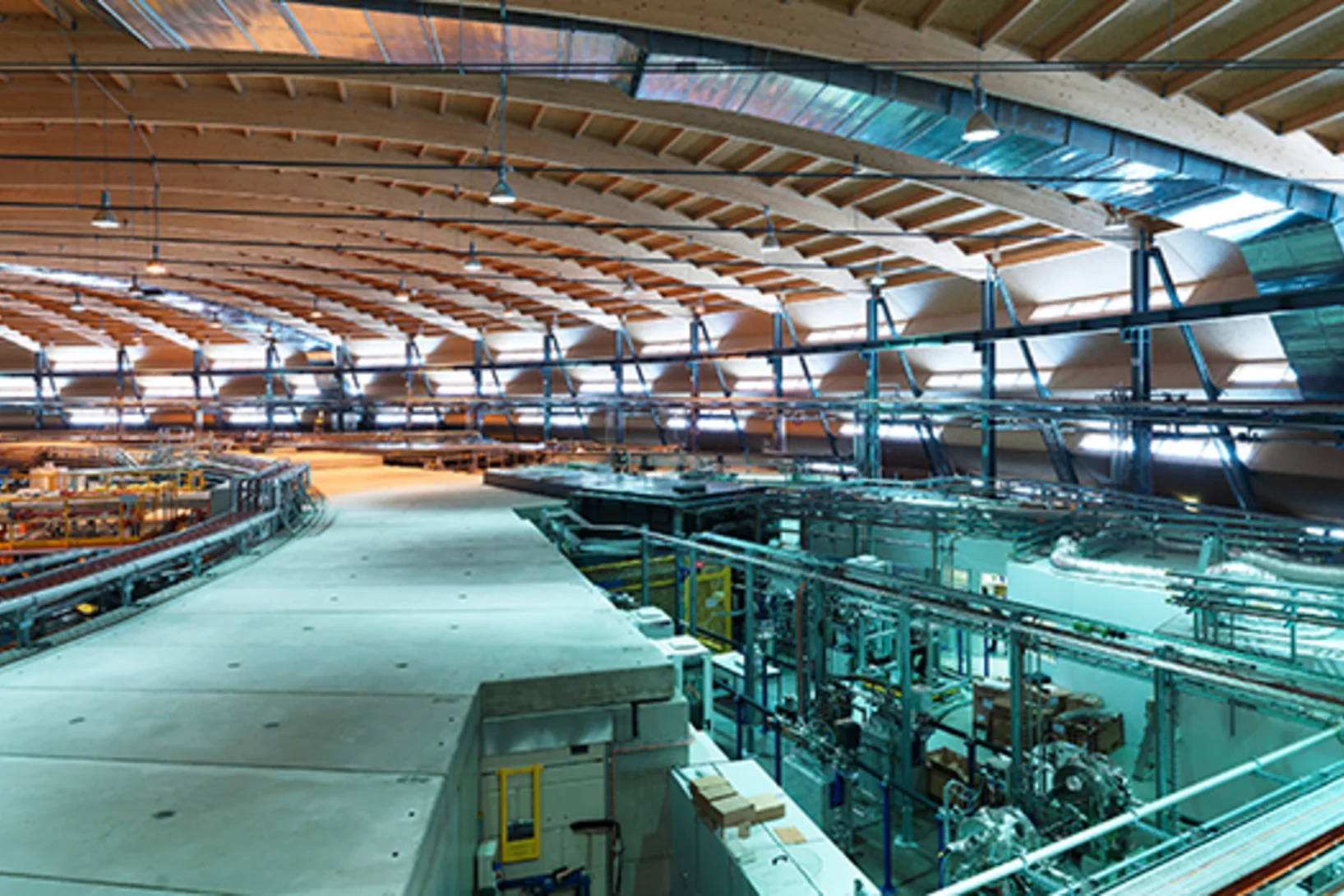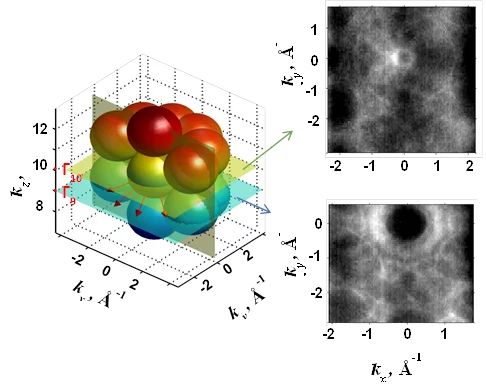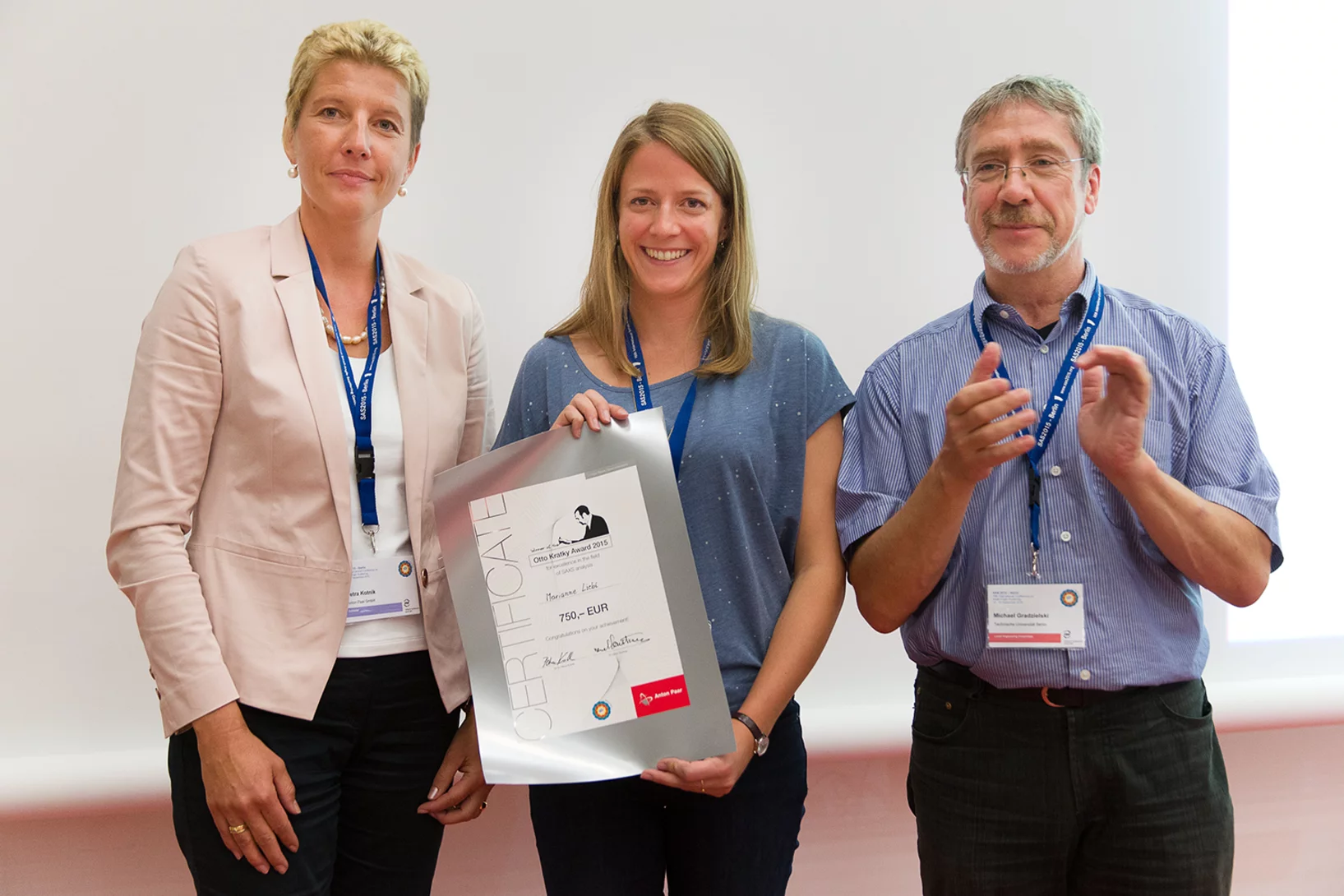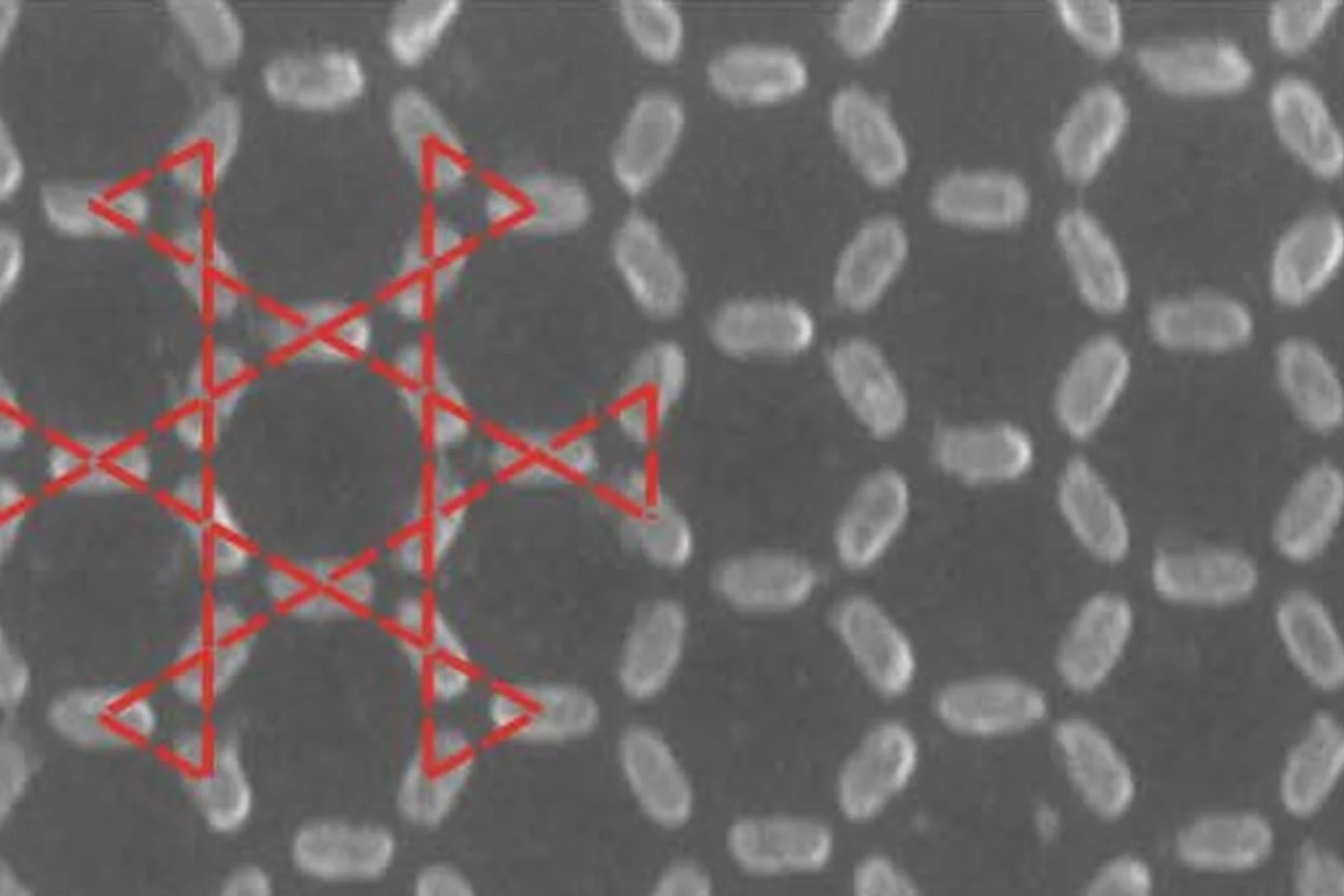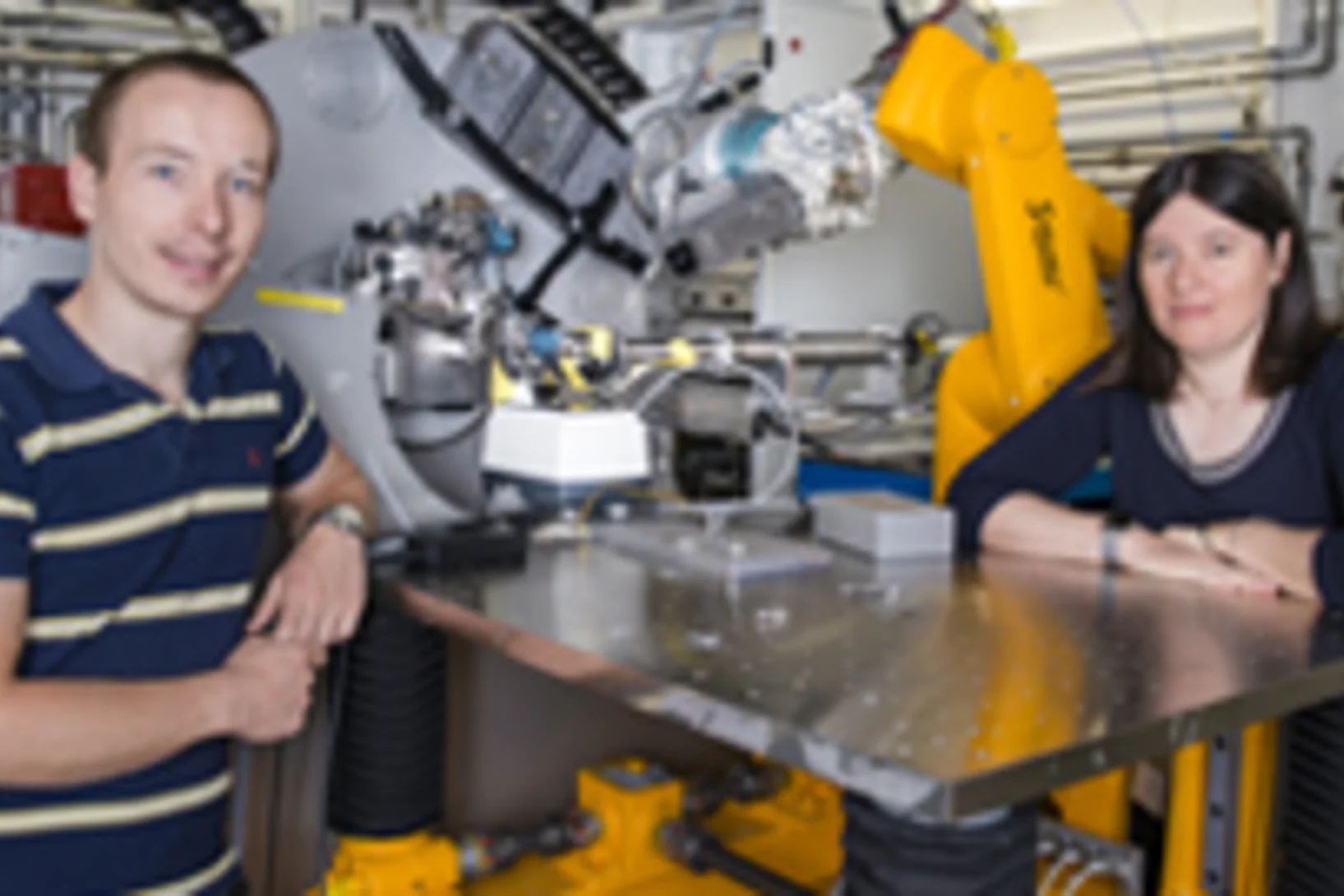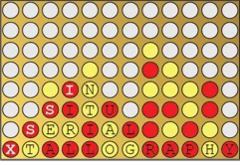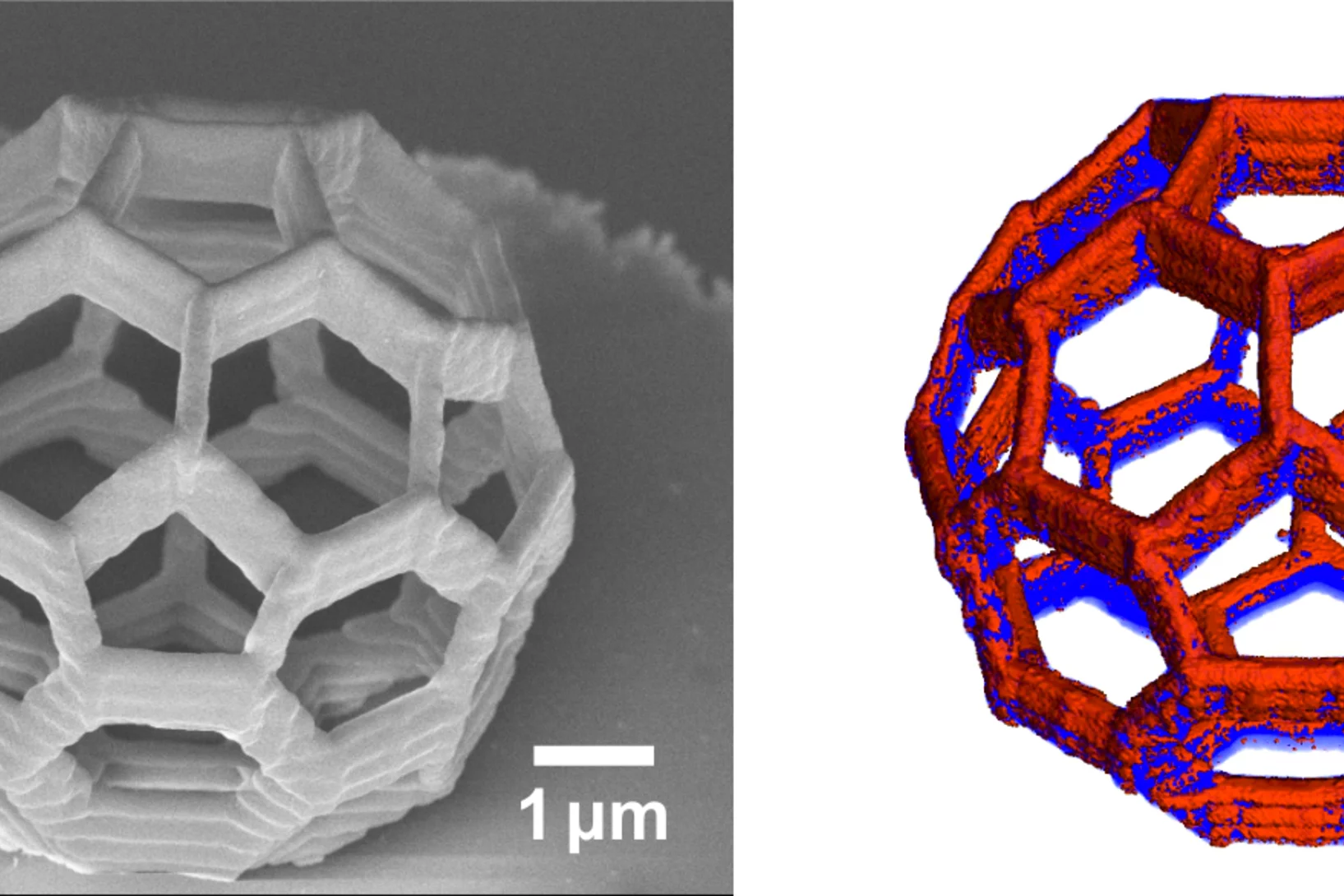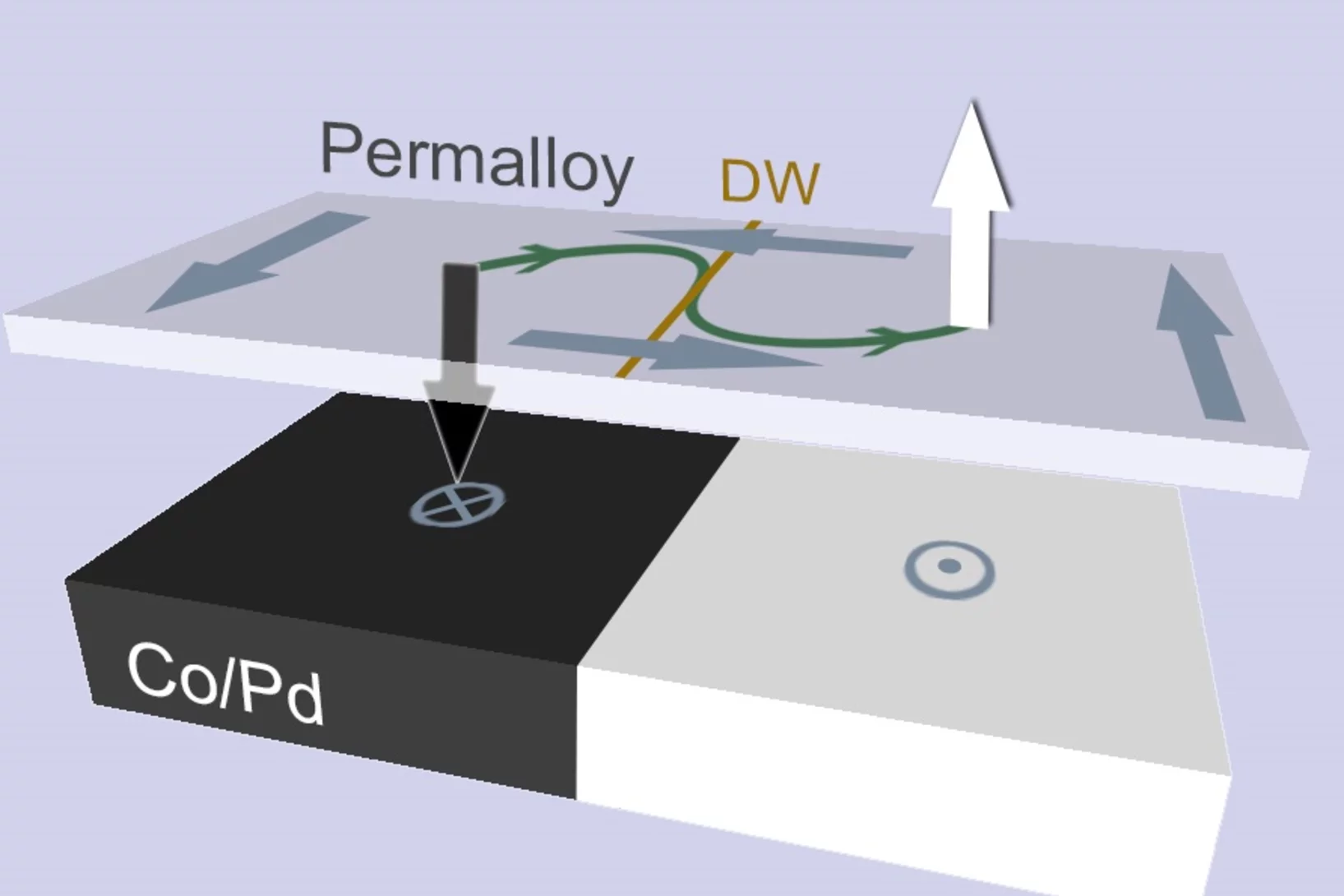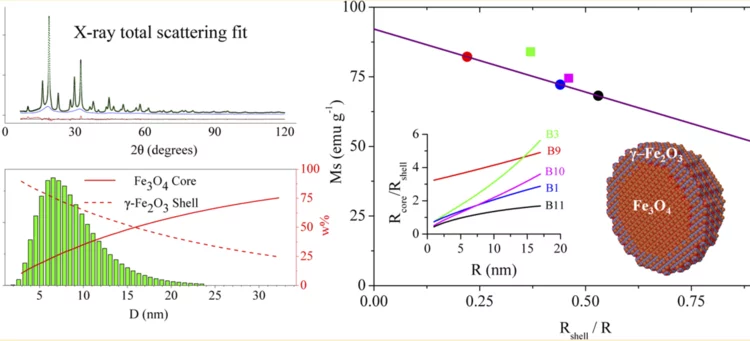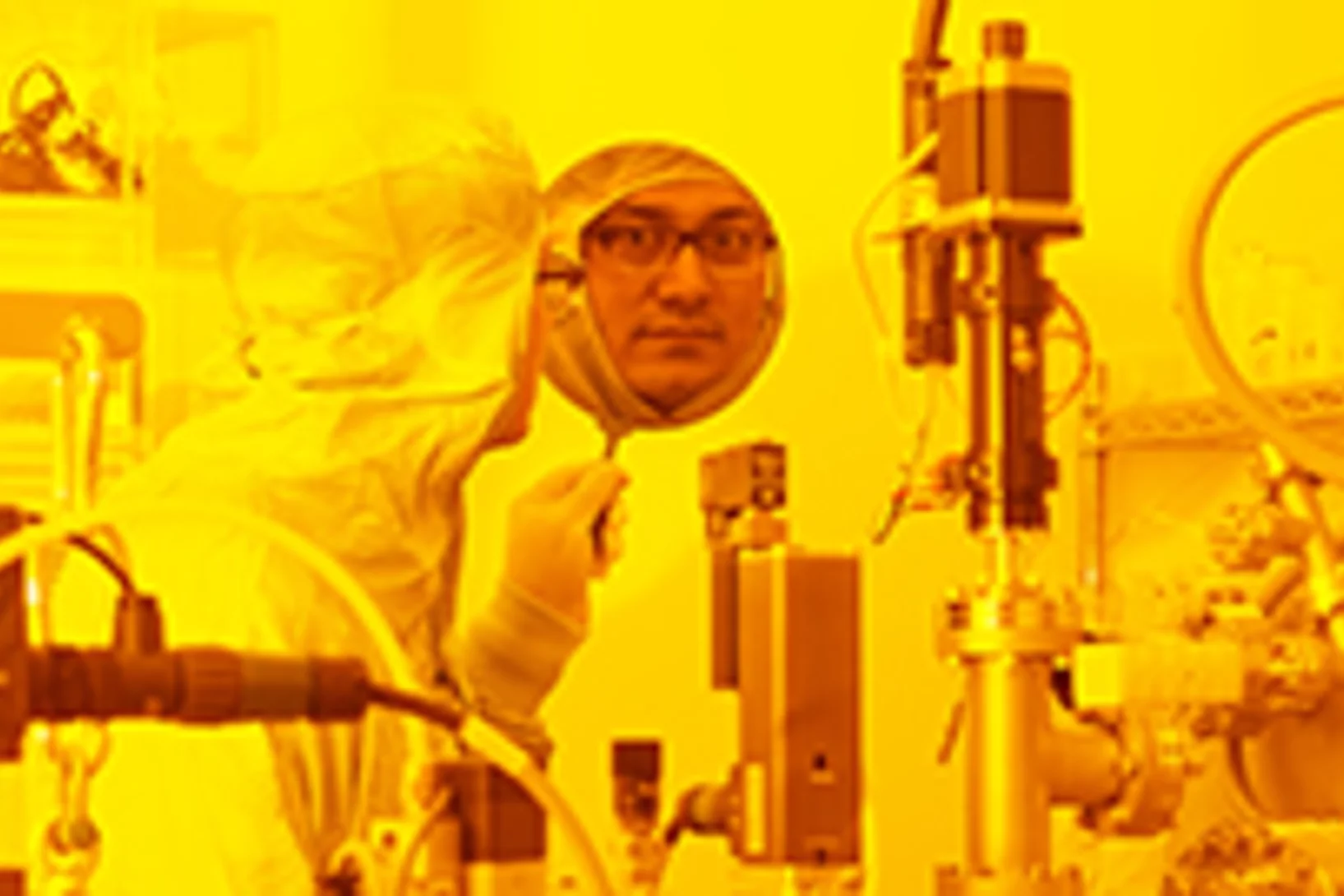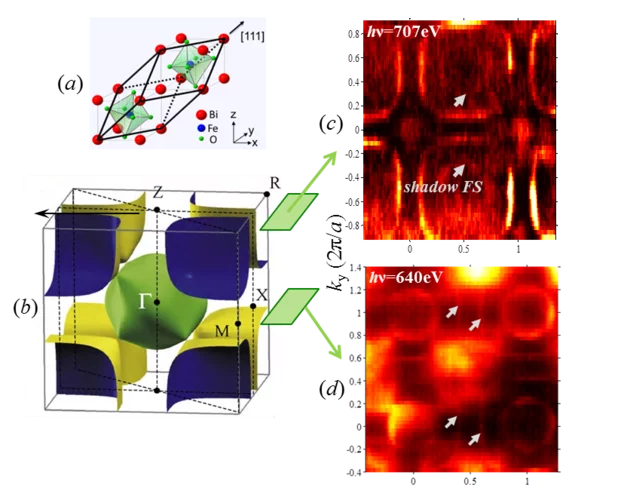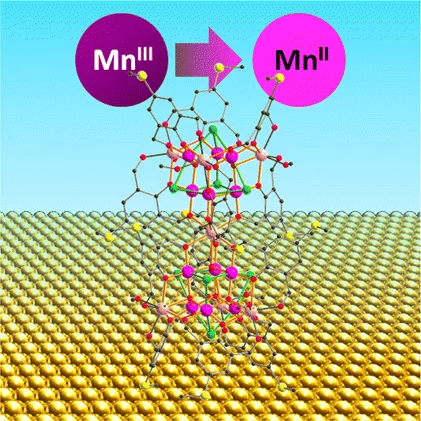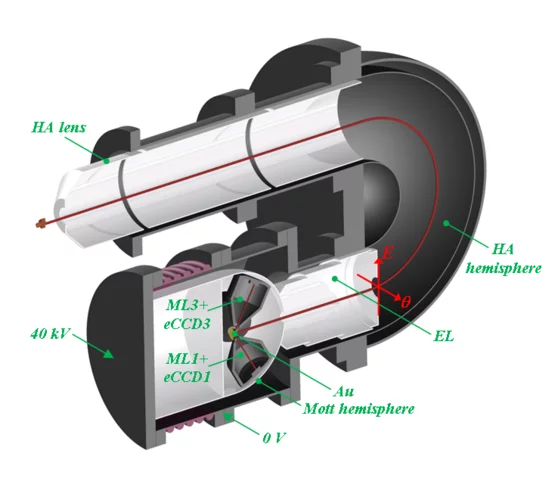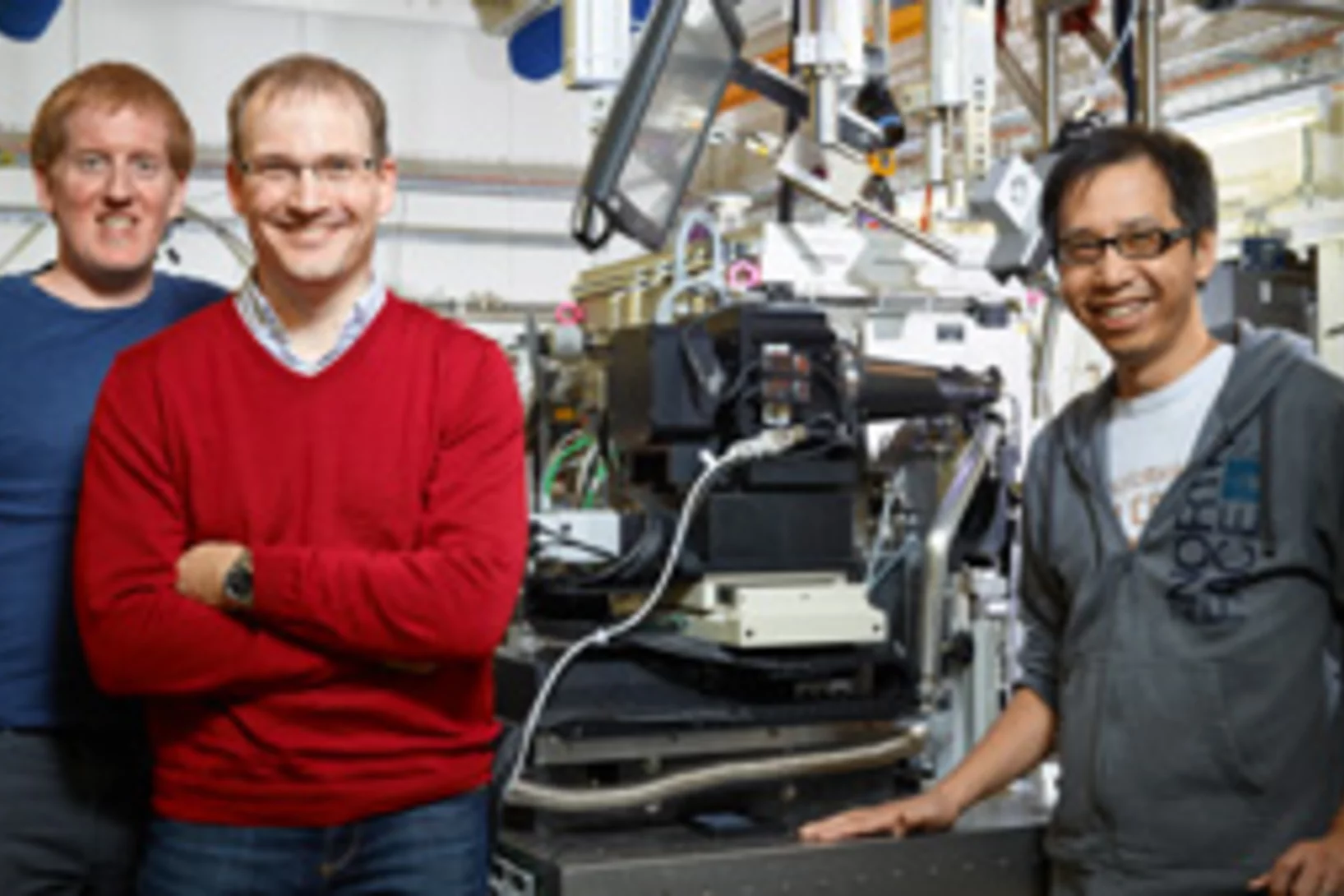Watching lithium move in battery materials
In order to understand limitations in current battery materials and systematically engineer better ones, it is helpful to be able to directly visualize the lithium dynamics in materials during battery charge and discharge. Researchers at ETH Zurich and Paul Scherrer Institute have demonstrated a way to do this.
Une nouvelle particule qui pourrait servir de base à de l’électronique économe en énergie
Le fermion de Weyl, découvert seulement l’an dernier, se déplace pratiquement sans résistance à l’intérieur de certains matériaux. Des chercheurs montrent à présent une voie possible pour l’utiliser dans des composants électroniques.
High-performance thermoelectric nanocomposites from nanocrystal building blocks
Using an assembly of colloidal nanocrystals a Ag-PbS nanocomposite was produced with increased thermoelectic figures of merit up to 1.7K at 850 K. EXAFS spectroscopy at the Ag K-edge was essential to show that Ag does not dissolve in PbS nanoparticles but preserved the individual nanodomains. This reduces the PbS intergrain energy barriers for charge transport
Ralentissement du flux électrique peut montrer la voie vers des ordinateurs économes en énergie
Les ordinateurs et les autres appareils électroniques représentent aujourd’hui une part considérable de la consommation d’énergie, une part dont il est pratiquement impossible de modifier l’importance avec les technologies actuellement utilisées. Les puces électroniques qui prendront place dans les appareils économes en énergie de demain devront donc être composées de matériaux innovants. De nouveaux résultats de recherche indiquent une voie possible comment on peut obtenir ces matériaux.
Preserved Embryos Illustrate Seed Dormancy in Early Angiosperms
The discovery of exceptionally well-preserved, tiny fossil seeds dating back to the Early Cretaceous corroborates that flowering plants were small opportunistic colonizers at that time, according to a new Yale-led study.
Mass density distribution of intact cell ultrastructure
The determination of the mass density of cellular compartments is one of the many analytical tools that biologists need to unravel the extremely complex structure of biological systems. Cryo X-ray nanotomography reveals absolute mass density maps of frozen hydrated cells in three dimensions.
First EIGER X 16M in operation at the Swiss Light Source
The macromolecular crystallography beamline X06SA at the Swiss Light Source, a synchrotron operated by Paul Scherrer Institute, is the first one in the world to upgrade its detector to an EIGER X 16M.
La nanostructure d’un os dévoilée en 3D
Les os sont composés de minuscules fibres, à peu près mille fois plus fines qu’un cheveu humain. Avec un nouveau type de méthode d’analyse informatique des chercheurs de l'Institut Paul Scherrer PSI étaient en mesure de déterminer pour la première fois l’agencement local et l’orientation de la nanostructure à l’intérieur d’un fragment d’os.
Observation of Fermi-Arc Spin Texture in TaAs
The study of nontrivial topological semimetals (TSM) is an emerging subject, providing a new frontier in topological aspects beyond insulators. Here, we have investigated the spin texture of surface Fermi arcs in the recently discovered Weyl semimetal TaAs using spin- and angle-resolved photoemission spectroscopy. The experimental results demonstrate that the Fermi arcs are spin polarized. The measured spin texture fulfills the requirement of mirror and time-reversal symmetries and is well reproduced by our first-principles calculations, which gives strong evidence for the topologically nontrivial Weyl semimetal state in TaAs. The consistency between the experimental and calculated results further confirms the distribution of chirality of the Weyl nodes determined by first principles calculations.
Excited states at interfaces of a metal-supported ultrathin oxide film
At the PEARL beamline, metal-supported ultrathin oxide films have been studied which are a class of materials of technological importance in various research fields such as catalysis, spintronics, or nanoelectronics.
X-ray nanotomography aids the production of eco-friendly solar cells
Polymer solar cells are in the spotlight for sustainable energy production of the future. Characterization of these devices by X-ray nanotomography helps to improve their production using environmentally friendly materials.
Un cousin de l’électron finalement observé au bout de 86 ans
Dans le cadre d’essais à la Source de Lumière Suisse SLS, des physiciens de l’Institut Paul Scherrer PSI dans une collaboration internationale avec des collègues de la Chine, de l’EPF Zurich et de l’EPF Lausanne ont observé une particule dont l’existence avait été prédite il y a déjà 86 ans. Cette nouvelle particule fait partie de la même famille que l’électron, le porteur de courants électriques. Contrairement à l'électron, la nouvelle particule n'a pas de masse et il n’apparaît que dans une classe particulière de matériaux qui sont dénommés des métaloïdes de Weyl.
Controlling tunnelling in methane loss from acetone ions by deuteration
At the imaging Photoelectron Photoion Coincidence (iPEPICO) endstation of the VUV beamline evidence of H-atom tunneling was shown.
La structure de la maladie du béton
a été décryptée
Quand ponts, barrages et autres ouvrages en béton se retrouvent striés de fissures sombres au bout de quelques décennies, c’est que la maladie du béton est à l’œuvre. Des chercheurs de l’Institut Paul Scherrer PSI et de l’Empa viennent de réussir à décrypter au niveau atomique la composition du matériau qui apparaît dans ces fissures. Ils ont découvert un agencement atomique cristallin, inconnu à ce jour.
Des rayons X pour la recherche dans un ovni
La Source de Lumière Suisse SLS se remarque tout d’abord par son bâtiment extraordinaire. A l’intérieur elle impressionne par la recherche de pointe. Un voyage à travers un monde dans lequel les éléctrons s’engagent dans un parcours de slalom et des protéines sont décodées par des rayons X.
Fermi states and anisotropy of Brillouin zone scattering in the decagonal Al–Ni–Co quasicrystal
Quasicrystals (QCs) are intermetallic alloys where excellent long-range order coexists with lack of translational symmetry in one or more dimensions. These materials have a high potential in application as a material for a solar cells, hydrogen storage applications, heat insulating layers, and others.
2015 Otto Kratky award
Marianne Liebi was awarded the 2015 Otto Kratky award by the Helmholtz-Centre Berlin for excellence in the field of small-angle X-ray scattering (SAXS) analysis. The award was bestowed in the last SAS2015 conference in Berlin. Marianne is a postdoctoral fellow in the coherent X-ray scattering group (CXS) in PSI, carrying out research in scanning SAXS measurement and analysis in 2D and 3D. Image credit ©HZB/Michael Setzpfandt
De minuscules aimants imitent la vapeur, l’eau et la glace
Des chercheurs de l’Institut Paul Scherrer (PSI) ont créé un matériau artificiel à partir d’un milliard de minuscules aimants. Fait étonnant : il s’avère à présent que les propriétés magnétiques de ce métamatériau changent avec la température de sorte qu’il peut prendre des états différents, semblable à l’eau qui a un état gazeux, un état liquide et un état solide.
La clé pour recharger plus vite une batterie lithium-ion
Les batteries Li-ion utilisant le phosphate de fer lithié comme électrode positive (cathode) ont une longue durée de vie et peuvent être rechargées relativement vite. Des chercheurs de l'Institut Paul Scherrer PSI et du constructeur automobile japonais Toyota expliquent dans une nouvelle étude pourquoi cela est possible. Ce phénomène a pu être mis en évidence grâce à des mesures réalisées à l'aide d'une nouvelle technique développée au sein du laboratoire électrochimique de PSI et du synchrotron Swiss Light Sources (SLS) au PSI.
A la recherche du plus petit bit
Si l’on veut produire à l’avenir des supports de stockage pour média toujours plus compacts, il faut que les domaines magnétiques à les bits de stockage à soient de plus en plus petits. Mais quelle est la taille minimale d’un tel aimant ? Des chercheurs de l’Institut Paul Scherrer PSI étudient les phénomènes surprenants du nanomagnétisme.
In Situ Serial Crystallography Workshop at the SLS
The Macromolecular Crystallography group at SLS is organizing a three days workshop on in situ serial crystallography (http://indico.psi.ch/event/issx) between November 17 and 19, 2015. It will be dedicated in the presentation of a novel method facilitating the structure determination of membrane proteins, which are highly important pharmaceutical targets but are difficult to handle using 'classical' crystallographic tools. Designed for 20 Ph.D. students, postdocs and young scientists from both academia and industry, the workshop will consist of introductory lectures, followed by hands-on practicals on in meso or lipidic cubic phase (LCP) crystallization, on in situ serial crystallography data collection using a micro-sized beam and on data processing.
New insight into receptor signalling
A team of 72 investigators across 25 institutions including researchers from the Paul Scherrer Institut obtained the X-ray structure of a rhodopsinàarrestin complex, which represents a major milestone in the area of G-protein-coupled-receptor (GPCR), a protein family recognized in the award of the 2012 Nobel Prize in Chemistry.
Element-Specific X-Ray Phase Tomography of 3D Structures at the Nanoscale
Recent advances in fabrication techniques to create mesoscopic 3D structures have led to significant developments in a variety of fields including biology, photonics, and magnetism. Further progress in these areas benefits from their full quantitative and structural characterization.
Nanoscale switch for vortex polarization mediated by Bloch core formation in magnetic hybrid systems
Vortices are fundamental magnetic topological structures characterized by a curling magnetization around a highly stable nanometric core.
Correlating the Core-Shell Composition and the Surface Structure to the Magnetic Properties for Magnetite-Maghemite Nanoparticles in the 5-15 nm Range
Very small superparamagnetic iron oxide nanoparticles were characterized by innovative synchrotron X-ray total scattering methods and Debye function analysis, developed at the X04SA Materials Science beamline of SLS.
Sept nanomètres pour l’électronique du futur
Des chercheurs de l’Institut Paul Scherrer ont réussi à produire dans un matériau semi-conducteur un schéma régulier, 16 fois plus petit que dans les puces informatiques actuelles. Ils ont ainsi fait un grand pas vers des composants informatiques encore plus petits. L’industrie considère que des structures de cette taille seront la norme en 2028.
Fermi Surface of Three-Dimensional La1−xSrxMnO3 Explored by Soft-X-Ray ARPES: Rhombohedral Lattice Distortion and its Effect on Magnetoresistance
A research team led by scientists from the Swiss Light Source has for the first time established three-dimensional (3D) electronic structure of the perovskite compound La1−xSrxMnO3 connected with its colossal magnetoresistance. Instrumental for this study has been the use of the new experimental technique of soft-x-ray ARPES, available at the ADRESS beamline, with its intrinsically sharp definition of 3D electron momentum.
Reduction of Mn19 Coordination Clusters on a Gold Surface
The surface-induced changes of the oxidation state and magnetic properties of Mn ion clusters have been probed by X-ray absorption spectroscopy and X-ray magnetic circular dichroism.
Concept of a multichannel spin-resolving electron analyzer based on Mott scattering
The spin of electron plays a crucial role in many physical phenomena, ranging from the obvious example of magnetism, via novel materials for spintronics applications, to high-temperature superconductivity. Spin- and angle-resolved photoelectron spectroscopy (SARPES) gives the most direct access to the spin aspects of the electronic structure, but the one-channel detection principle of all presently available SARPES spectrometers severely limits their efficiency. A team of Swiss and Russian scientists has developed a revolutionary concept of a multichannel electron spin detector based on Mott scattering as the spin selective process and imaging-type electron optics.
L’union fait la force
Décrypter les molécules au SwissFEL et à la SLSLes protéines sont un objet de recherche convoité, mais récalcitrant. Leur étude est aujourd’hui facilitée par une nouvelle méthode développée à l’aide d’un laser à rayons X à électrons libres comme le futur SwissFEL du PSI. Elle consiste à exposer à intervalles rapprochés de petits échantillons identiques de protéines à de la lumière de type rayons X. On contourne ainsi un problème majeur auquel la recherche sur les protéines s’est heurtée jusqu’ici: produire des échantillons de taille suffisante.



